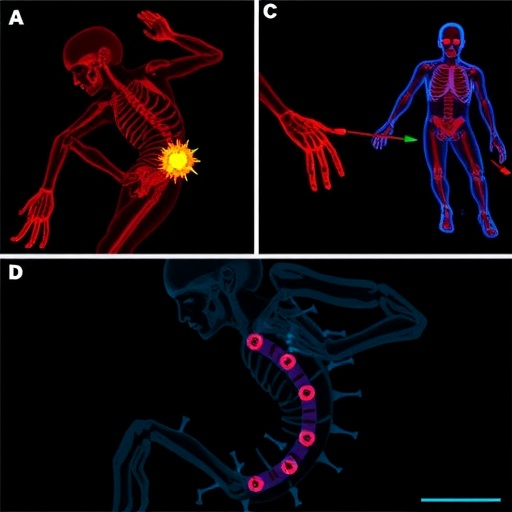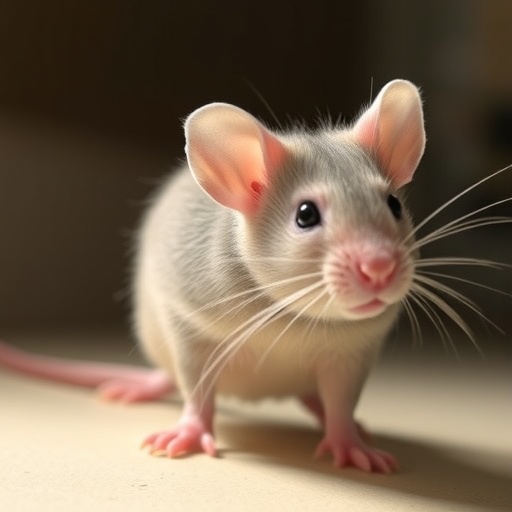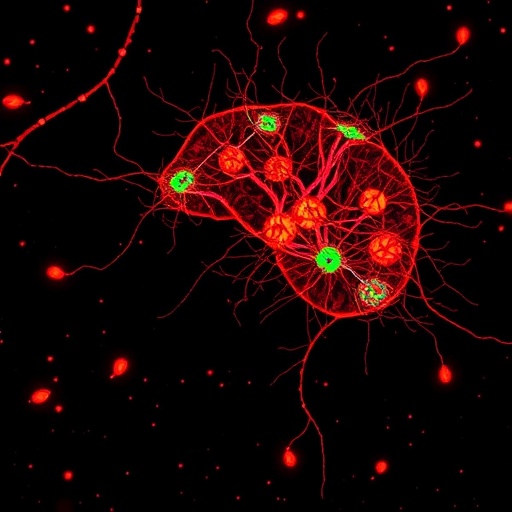PROTECT YOUR DNA WITH QUANTUM TECHNOLOGY
Orgo-Life the new way to the future Advertising by AdpathwayFor centuries, the plant Lawsonia inermis, more commonly known as henna, has been revered for its natural dyeing properties, coloring skin and textiles with its distinctive reddish pigment. However, contemporary scientific research has uncovered promising new therapeutic potential for a chemical component extracted from henna, known as Lawsone, which may revolutionize the treatment of liver fibrosis. Researchers at Osaka Metropolitan University have made a groundbreaking discovery showing that Lawsone can inhibit the cellular mechanisms driving liver fibrosis, thereby restoring liver health and function.
Liver fibrosis is a pathophysiological condition marked by excessive accumulation of extracellular matrix proteins, primarily due to chronic liver injury from factors including excessive alcohol consumption, viral hepatitis, and fatty liver disease. This scarring process disrupts normal liver architecture and function, ultimately risking progression to cirrhosis, liver failure, and hepatocellular carcinoma. Despite liver fibrosis affecting a significant fraction of the global population—estimated at 3 to 4 percent in its advanced stages—effective targeted treatments remain scarce, representing a critical unmet medical need.
At the cellular level, hepatic stellate cells (HSCs) play a vital role in the maintenance of liver homeostasis. Under physiological conditions, these cells remain in a quiescent state, storing vitamin A and supporting normal liver architecture. However, sustained liver injury activates HSCs, transforming them into proliferative, fibrogenic myofibroblast-like cells. These activated HSCs excessively produce fibrous collagen and other matrix components, perpetuating scarring and impairing liver function. Hence, targeting activated HSCs has become a focal point in therapeutic strategies aiming to halt or reverse fibrosis.
The research team, led by Associate Professor Tsutomu Matsubara and Dr. Atsuko Daikoku at Osaka Metropolitan University’s Graduate School of Medicine, pioneered a novel chemical screening methodology to directly identify substances capable of modulating HSC activation. Through this advanced high-throughput screening process, they isolated Lawsone—a naphthoquinone compound naturally occurring in henna tree leaves—as a potent inhibitor of HSC activation pathways.
In vivo studies using murine models of liver fibrosis treated with Lawsone demonstrated a significant reduction in hallmark fibrotic biomarkers. Levels of Yes-associated protein (YAP), alpha-smooth muscle actin (αSMA), and collagen type 1 alpha 1 (COL1A) were markedly decreased, indicating suppression of pro-fibrogenic signaling and extracellular matrix deposition. Furthermore, the treated HSCs exhibited increased expression of cytoglobin (CYGB), a protein associated with antioxidant defense and the quiescent state of stellate cells, suggesting that Lawsone helps revert fibrogenic cells back toward their non fibrotic, dormant phenotype.
Mechanistically, Lawsone appears to exert its antifibrotic effect by modulating YAP signaling pathways within HSCs. YAP is a transcriptional coactivator implicated in cellular proliferation and fibrosis progression. By inhibiting YAP pathway activation, Lawsone prevents excessive collagen synthesis and mitigates fibrotic tissue buildup. Concurrently, the induction of CYGB expression enhances oxidative stress resilience in HSCs, further contributing to the restoration of their homeostatic roles and inhibiting ongoing fibrogenesis.
This dual modulation of both fibrotic signaling and antioxidant response by Lawsone opens new avenues for therapeutic interventions that surpass current treatments, which primarily aim to manage symptoms rather than reverse fibrosis. Indeed, the researchers posit that Lawsone-based drugs could constitute the first pharmacological strategy that not only controls but potentially improves established liver fibrosis, offering hope to millions of patients worldwide.
Recognizing the translational value of their findings, the Osaka Metropolitan University team is currently developing sophisticated drug delivery systems intended to selectively transport Lawsone to activated HSCs with high efficiency. By optimizing targeted delivery, they aim to enhance therapeutic potency while minimizing off-target effects and systemic toxicity, a crucial consideration for chronic liver disease therapies.
The implications of this research also extend beyond liver fibrosis. Since fibroblast activation is a common pathological feature in various fibrotic diseases affecting organs such as the lungs, kidneys, and heart, controlling fibroblast behavior via principles elucidated from Lawsone’s mechanism may herald broader anti-fibrotic applications. Such cross-organ therapeutic potential underscores the transformative nature of targeting cellular pathways involved in fibrosis.
Published in the peer-reviewed journal Biomedicine & Pharmacotherapy, this study not only advances our understanding of liver fibrosis pathogenesis but also exemplifies the innovative repurposing of natural compounds from traditional sources for cutting-edge medical applications. The findings elevate henna from a mere cosmetic dye to a promising pharmacological agent with life-saving potential.
As the global burden of liver disease continues to rise, largely driven by lifestyle-related factors, the urgency for effective anti-fibrotic therapies cannot be overstated. The discovery of Lawsone’s inhibitory effect on fibrogenic HSCs presents a beacon of hope, offering a scientifically sound and potentially practical approach to drastically improving liver health outcomes. Further clinical studies are anticipated to validate these preclinical results and accelerate the translation to human therapeutics.
Looking forward, the collaborative efforts of pharmacologists, molecular biologists, and clinical scientists will be instrumental in refining Lawsone-based treatments, including formulating oral or injectable pharmacokinetics suitable for chronic administration. Success in such endeavors can redefine the therapeutic landscape for liver fibrosis, transforming a previously irreversible condition into a manageable or even reversible disease state.
In conclusion, the research from Osaka Metropolitan University pioneers a novel intervention pathway by harnessing the bioactive components of a centuries-old natural dye. This breakthrough underscores the untapped potential residing within traditional natural products, inspiring continued exploration of natural substances for addressing complex modern health challenges such as liver fibrosis. The translation of Lawsone into clinical use heralds a promising future in precision medicine for liver diseases.
Subject of Research: People
Article Title: Lawsone can suppress liver fibrosis by inhibition of YAP signaling and induction of CYGB expression in hepatic stellate cells
News Publication Date: 4-Sep-2025
Web References: http://dx.doi.org/10.1016/j.biopha.2025.118520
Image Credits: Osaka Metropolitan University
Keywords: Liver fibrosis, Hepatic stellate cells, Lawsone, Lawsonia inermis, YAP signaling, Cytoglobin, Antifibrotic therapy, Natural compounds, Drug development, Liver disease, Fibrosis reversal
Tags: chronic liver injury effectscirrhosis risk factorsextracellular matrix proteins accumulationhenna healing propertieshepatic stellate cells functionLawsone chemical compoundliver fibrosis treatmentliver health restorationnatural remedies for liver healthscientific research on herbal medicinetherapeutic potential of hennaunmet medical needs in liver disease


 16 hours ago
15
16 hours ago
15





















 English (US) ·
English (US) ·  French (CA) ·
French (CA) ·